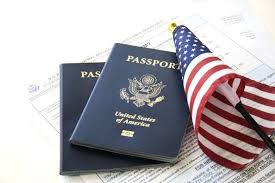The H-1B visa program allows U.S. employers to hire foreign workers in specialty occupations that require theoretical or technical expertise, typically in fields like IT, engineering, healthcare, and finance. To qualify, candidates must have a bachelor’s degree or higher (or its equivalent) relevant to the job. The program is capped annually, with 85,000 visas available (65,000 for general applicants and 20,000 for those with advanced U.S. degrees). H-1B visas are valid for three years, extendable to six. Employers must demonstrate that hiring foreign workers won’t negatively impact U.S. workers’ wages and working conditions.
Securing an H-1B visa sponsorship is crucial for foreign professionals seeking employment in the U.S., as it provides legal work authorization in specialized fields like IT, healthcare, and engineering. It offers career growth, competitive salaries, and a potential pathway to permanent residency. Sponsorship from a U.S. employer is essential, as individuals cannot apply independently.
The purpose of this article is to guide foreign professionals on how to find U.S. employers offering H-1B visa sponsorship. It will provide practical strategies, including researching companies with a history of sponsoring H-1B visas, leveraging job boards and networking platforms, and tailoring applications to meet employer requirements. The article aims to demystify the H-1B process, offer actionable tips for standing out to potential sponsors, and empower readers to take confident steps toward securing employment in the U.S.
Understand the H1B Visa Process
The H-1B visa is a non-immigrant visa that allows U.S. employers to hire foreign professionals in specialty occupations requiring specialized knowledge and a bachelor’s degree or higher (or its equivalent). Common fields include IT, engineering, healthcare, finance, and education. Key requirements include:
- Job Offer: The applicant must have a valid job offer from a U.S. employer.
- Specialist Occupation: The role must require specialized knowledge and at least a bachelor’s degree.
- Educational Qualifications: The applicant must hold a relevant degree or its equivalent.
- Labor Condition Application (LCA): The employer must file an LCA with the Department of Labor to ensure fair wages and working conditions.
- Visa Cap: The program is subject to an annual cap of 85,000 visas (65,000 for general applicants and 20,000 for those with advanced U.S. degrees).
The H-1B visa is initially granted for three years, with the possibility of a three-year extension. It also offers a potential pathway to permanent residency (Green Card) in the U.S.
Eligibility criteria for foreign workers to apply for the H1B visa
To be eligible for the H-1B visa, foreign workers must meet specific criteria:
- Specialist Occupation: The job must require specialized knowledge and at least a bachelor’s degree or its equivalent in a related field.
- Educational Qualifications: Candidates must hold a U.S. bachelor’s degree (or higher) or a foreign equivalent. Alternatively, relevant work experience and certifications may substitute for formal education.
- Job Offer: Applicants need a valid job offer from a U.S. employer willing to sponsor the visa.
- Licensing Requirements: For certain professions (e.g., law, medicine), state licensure may be necessary.
The role
Employers play a crucial role in the H-1B sponsorship process. They must first offer a job in a specialty occupation and file a Labor Condition Application (LCA) with the Department of Labor, ensuring fair wages and working conditions. Once approved, they submit Form I-129 to U.S. Citizenship and Immigration Services (USCIS) on behalf of the foreign worker. Employers also cover associated fees and comply with immigration regulations. Their sponsorship is essential, as individuals cannot apply for an H-1B visa independently.
General timeline for applying for an H1B visa
The H-1B visa application follows a structured timeline:
- Registration (March): Employers submit an online H-1B lottery registration with USCIS.
- Lottery Selection (March-April): USCIS randomly selects applicants if registrations exceed the 85,000 visa cap.
- Petition Filing (April-June): Selected employers file Form I-129 and supporting documents.
- Processing (2-6 months): USCIS reviews applications, with Premium Processing reducing wait time to 15 days.
- Approval & Stamping (July-September): If approved, the worker schedules a visa interview at a U.S. consulate.
- Start Date (October 1st): Approved workers begin employment in the U.S.
Research Employers Who Regularly Sponsor H1B Visas
To increase your chances of securing an H-1B visa, target employers with a history of sponsoring foreign workers. Here’s how to research them effectively:
- Use the H-1B Sponsor Database: Websites like H1BGrader, MyVisaJobs, and USCIS H-1B Data Hub provide information on companies that frequently sponsor visas.
- Check Company Career Pages: Many tech firms, financial institutions, and healthcare organizations mention visa sponsorship in their job postings.
- Leverage LinkedIn & Networking: Connect with professionals in your field who have secured H-1B sponsorship to identify potential employers.
- Focus on High-Sponsorship Industries: IT, engineering, finance, healthcare, and academia are the top fields for H-1B sponsorship.
- Monitor Past H-1B Filings: Reviewing previous years’ approved petitions can help you identify reliable sponsors and tailor applications accordingly.
Use Job Portals and Employer Databases
Using job portals and employer databases is an effective way to find H-1B visa sponsorship opportunities. Here’s how to leverage them:
1. Specialized H-1B Sponsor Databases
- Websites like H1BGrader, MyVisaJobs, and USCIS H-1B Data Hub provide lists of companies that have sponsored H-1B visas in the past.
- These platforms allow you to filter job postings based on visa sponsorship history, industry, and job role.
2. General Job Portals with Visa Sponsorship Filters
- Platforms like LinkedIn, Indeed, Glassdoor, and Dice offer job listings with “H-1B sponsorship available” filters.
- Use keywords like “H-1B visa sponsorship,” “H-1B transfer,” or “willing to sponsor” in your job search.
3. Company Career Pages
- Visit the career sections of major corporations in industries known for H-1B sponsorship, such as IT, engineering, finance, and healthcare.
- Look for explicit mentions of visa sponsorship in job descriptions.
4. Professional Networks and Forums
- Engage with professionals on LinkedIn, Reddit, and industry-specific forums to learn about companies actively hiring foreign workers.
- Join groups and discussions where professionals share job openings with sponsorship opportunities.
By using these resources, you can strategically target companies with a strong record of sponsoring H-1B visas.
Networking and direct outreach are powerful strategies for finding H-1B visa sponsorship opportunities. Here’s how to make the most of them:
1. Build a Professional Network
- Leverage LinkedIn: Connect with professionals in your industry, including current H-1B holders and recruiters from U.S. companies.
- Join industry groups: Participate in forums and groups related to your field to stay informed about job openings.
- Attend Networking Events: Look for virtual and in-person job fairs, industry conferences, and meetups where you can interact with potential employers.
2. Engage in Informational Interviews
- Reach out to professionals working at companies known for sponsoring H-1B visas.
- Ask for insights into the company culture, hiring practices, and potential visa sponsorship opportunities.
3. Contact Employers Directly
- Email Hiring Managers: Send well-crafted emails expressing your interest in specific roles and asking about sponsorship opportunities.
- Apply Speculatively: Even if a job posting does not mention sponsorship, apply and bring up the topic during the interview if appropriate.
4. Utilize Alumni Networks
- Connect with alumni from your college or university who are working in the U.S.
- They may provide referrals or insights into companies that sponsor H-1B visas.
Proactive networking and direct outreach can help you access hidden job opportunities and establish valuable connections.
Tailor Your Resume and Application
Tailoring your resume and application is critical when seeking H-1B visa sponsorship. A customized approach increases your chances of standing out to U.S. employers. Here’s how to do it:
1. Highlight Relevant Skills and Experience
- Align with Job Requirements: Carefully read the job description and mirror the required skills, qualifications, and experience in your resume.
- Showcase Specialized Knowledge: Emphasize expertise in your field, especially in specialty occupations that qualify for H-1B visas (e.g., IT, engineering, healthcare).
- Include Keywords: Use industry-specific keywords to help your application pass through Applicant Tracking Systems (ATS).
2. Emphasize International Experience
- Highlight previous roles with multinational companies, cross-cultural projects, or remote collaborations with U.S.-based teams.
- This demonstrates your adaptability and readiness for the U.S. work environment.
3. Address Visa Sponsorship in the Cover Letter
- Briefly mention your need for H-1B sponsorship, showing understanding and willingness to facilitate the process.
- Use a professional tone, focusing on how your skills align with the company’s needs.
4. Include Education and Certifications
- List relevant degrees, certifications, and professional training, especially if they align with U.S. educational standards.
5. Format Professionally
- Use a clean, professional resume format with bullet points, clear headings, and consistent styling.
A tailored resume and thoughtful application can significantly improve your chances of securing an interview and, ultimately, an H-1B visa sponsorship.
Understanding the H-1B sponsorship process and requirements is crucial for foreign professionals seeking to work in the U.S. Here’s an overview:
1. Eligibility Criteria
- Specialty Occupation: The job must require specialized knowledge and at least a bachelor’s degree or its equivalent.
- Educational Qualifications: Candidates need a relevant degree or equivalent work experience.
- Valid Job Offer: Applicants must secure a job offer from a U.S. employer willing to sponsor the H-1B visa.
2. Employer’s Role in the Sponsorship Process
- Labor Condition Application (LCA): The employer submits an LCA to the Department of Labor (DOL), demonstrating fair wages and working conditions.
- Petition Filing: The employer files Form I-129 with U.S. Citizenship and Immigration Services (USCIS), along with the necessary documents and fees.
3. H-1B Lottery System (if applicable)
- Due to high demand, the H-1B visa program uses a lottery system for 85,000 visas (65,000 general cap and 20,000 for advanced U.S. degree holders).
4. Visa Stamping and Consulate Interview
- Once USCIS approves the petition, the applicant schedules a visa interview at a U.S. consulate in their home country.
- Supporting Documents: Bring the approval notice, job offer letter, and educational credentials to the interview.
5. Arrival and Employment in the U.S.
- After visa approval, the applicant can travel to the U.S. and start working, typically from October 1st of the fiscal year.
By understanding the H-1B process, applicants can better prepare their documents, meet eligibility requirements, and navigate each step with confidence.
While the H-1B visa is a popular option, foreign professionals should also explore alternative visa sponsorships in case they are not selected in the H-1B lottery or do not meet specific criteria. Here are some alternatives:
1. L-1 Visa (Intra-Company Transfer)
- For employees of multinational companies transferring to a U.S. branch.
- Requires at least one year of employment with the company outside the U.S. within the last three years.
2. O-1 Visa (Extraordinary Ability)
- For individuals with exceptional talent in fields like science, education, business, arts, or athletics.
- Requires proof of outstanding achievements, such as awards, publications, or media recognition.
3. TN Visa (For Canadian & Mexican Nationals)
- Available to Canadian and Mexican professionals under NAFTA/USMCA.
- Limited to specific professions, such as engineers, scientists, and accountants.
4. E-3 Visa (For Australian Nationals)
- Exclusively for Australian citizens working in specialty occupations similar to the H-1B.
- Requires a job offer from a U.S. employer but has a higher approval rate and no lottery.
5. Green Card Sponsorship (EB-2, EB-3)
- Some employers may directly sponsor employment-based green cards, bypassing temporary work visas.
- EB-2 is for individuals with advanced degrees or exceptional ability, while EB-3 is for skilled and unskilled workers.
6. Cap-Exempt H-1B Visas
- Certain employers, like universities, research institutions, and non-profits, are exempt from the H-1B cap and can file petitions year-round.
By considering these alternatives, professionals can expand their options for working legally in the U.S., even if they do not secure an H-1B visa.
Stay Informed About Changes to H1B Visa Policies
Staying informed about changes to H-1B visa policies is essential for foreign professionals and employers. U.S. immigration policies can change due to new legislation, executive orders, or USCIS regulations, impacting eligibility requirements, application procedures, and visa quotas. Here’s how to stay updated:
1. Follow Official Sources:
- USCIS Website: Regularly check the U.S. Citizenship and Immigration Services (USCIS) website (uscis.gov) for the latest H-1B visa news, policy updates, and processing timelines.
- Department of Labor (DOL): Monitor the DOL for changes to Labor Condition Application (LCA) requirements and wage standards.
2. Subscribe to Newsletters:
- Sign up for USCIS email updates, immigration law firm newsletters, and industry-specific publications that focus on visa and immigration topics.
3. Join Professional Networks:
- Participate in forums, LinkedIn groups, and associations related to immigration and employment in the U.S.
- Engage with professionals who share insights about H-1B policy changes.
4. Consult Immigration Attorneys:
- Regular consultations with immigration lawyers can provide personalized advice and help navigate complex policy changes.
5. Monitor Government Announcements:
- Pay attention to White House announcements, Congressional hearings, and policy proposals related to immigration reform.
6. Use Reliable News Outlets:
- Follow reputable sources like Forbes, Bloomberg, and The Wall Street Journal, which often report on immigration policy changes.
By staying informed, applicants and employers can proactively adjust their strategies and documentation to align with evolving H-1B visa requirements.
Conclusion
To find employers offering H-1B visa sponsorship, follow these key steps:
- Research Companies: Use platforms like H1BGrader, MyVisaJobs, and USCIS H-1B Data Hub to identify past sponsors.
- Leverage Job Portals: Search LinkedIn, Indeed, and Glassdoor using “H-1B sponsorship” filters.
- Network Effectively: Connect with professionals and attend industry events.
- Tailor Your Resume: Highlight specialized skills and address visa needs in your cover letter.
- Stay Informed: Keep up with H-1B policy changes through USCIS updates and immigration news.
Securing an H-1B visa sponsorship requires persistence, strategic networking, and staying well-informed. Keep applying to companies with a history of sponsoring visas, even if faced with initial rejections. Build a strong professional network through LinkedIn, industry events, and alumni connections. Regularly check USCIS updates, immigration news, and job boards to stay ahead of opportunities. With determination and proactive engagement, you can improve your chances of achieving your U.S. career goals.
A successful H-1B job search requires thorough research and a tailored approach. Identifying sponsoring employers, leveraging job portals, and networking strategically increase your chances. Customizing your resume and cover letter to match job requirements helps you stand out. Staying informed about policy changes ensures you’re always prepared. A well-planned strategy significantly improves your chances of securing sponsorship.





